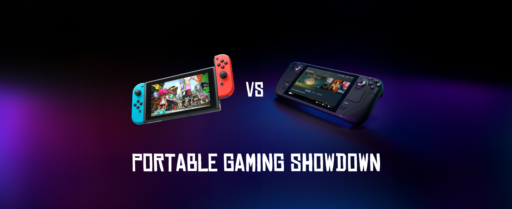The game industry is changing at a pace never seen before, with all the revolutions within AI, VR, and every other new-generation technology. Change isn’t only improving gameplay; it’s shaping, in many ways, how players can interact with virtual worlds. Here, we look into the major trends shaping the future of gaming and mention some of the most promising future releases of 2024 or those that have surfaced so far.
1. AI Game Development: More Intelligent NPCs and Dynamic Worlds
Artificial Intelligence is eventually going to become an integral part of gaming, revolutionizing the world of non-playable characters (NPCs) to become much more life-like and environments more responsive. This is because AI gives developers the chance to create enemies to reflect the behavior of the player, change strategies mid-game, or build dynamic in-game worlds that change with the decision of the player.
Example: The Elder Scrolls VI (Expected 2026)

Although still a few years out, Bethesda has made several hints about The Elder Scrolls VI with dynamic world-contents NPCs with memory, which remember player actions to instigate consequences. This is AI-driven and deepens immersion and interactions in ways never previously possible.
Trend Insight: Games will include AI-driven quests, procedurally generated maps, as well as adaptive storylines to ensure every playthrough is a little different.
2. VR and AR: Boundless Reality
Virtual Reality (VR) and Augmented Reality (AR) are becoming increasingly immersive, with every new headset and game progressing toward that latter goal. With VR, you can enter totally immersed virtual worlds, but with AR, you bring game elements into the real world using a smartphone or through glasses.
Assassin’s Creed Nexus VR (2024)

Through Assassin’s Creed Nexus VR from Ubisoft, players will feel the pure stealth gameplay of the series in a completely different way, with action in ancient cities and rooftop chases. This title shows how new franchising can be enhanced by introducing a physical level in gameplay through VR.
Trend Insight: In the near future, lighter VR headsets, haptic feedback suits, and glasses that enable AR will blur the lines between the virtual world and reality even more.
3. Cloud Gaming: Play Anytime, Anywhere
Cloud gaming means streaming games of the highest quality in real time, without any extra need for expensive hardware. As internet speed improves, it becomes a viable alternative to console gaming and gaming PCs that will allow players to play on a variety of devices besides smartphones and tablets.
Example: Starfield on Xbox Cloud Gaming (2024)

Already available on Xbox Cloud Gaming, Starfield lets users explore the entirety of huge galaxies using minimal equipment. Such is the capability of cloud gaming: access large, resource-hungry games from various devices with virtually no delay.
Trend Insight: As the technology for the cloud continues to advance, we will see exclusive games designed with the cloud in mind and use remote servers to generate incredibly rich, vast worlds like never before.
4. AI-Powered Procedural Generation: Infinite Possibilities
This means that procedural generation generates the game content via algorithms. So, if an algorithm is good, then you have a nearly infinite variety of environments and experiences for a given player. Thanks to AI, procedural generation now allows developers to create open worlds with dynamic real-time changes or intricate stories, without taking too much time from people.
Example: Hades II (Early Access 2024)

Hades II reimagines the procedural dungeon design that made Hades’s predecessor so beloved, making sure that each run is going to be new and thrilling. With AI-based mechanics, enemy behavior and room layouts twist on the fly to keep the player guessing in real time.
Trend Insight: Procedural generation will prove a path for longer-lasting games and diminish manual content creation time, as it allows for countless challenges and fun forever.
5. Next-Gen Graphics and Realism: The Rise of 8K and Ray Tracing
The next gen of gaming continues to push the envelope when it comes to visual fidelity: 8K resolution, real-time ray tracing, and photorealistic textures are becoming more accessible and creating breathtaking environments, as well as lifelike characters. These graphical advancements stay deep-rooted in an unbridled, amazing experience for players.
Example: Call of Duty: Modern Warfare III (2024)

With real-time ray tracing and the most photorealistic character models, Modern Warfare III boasts one of the most spectacular visual experiences shooters have ever seen. The game leverages features provided by next-gen hardware to deliver cinematic visuals without being overly demanding on performance.
Trend Insight: As next-gen consoles and GPUs become the new standards, 8K gaming with ray tracing will become mainstream, taking immersion to unparalleled levels never seen before.
6. The Metaverse: The Future of Social Gaming
As of late, the idea of metaverse-shared, persistent virtual worlds- gained momentum. Games transformed from entertainment platforms and brands to places where people can meet and socialize, trade, and even to virtually attend events. It transformed the games from purely gaming fun into a digital ecosystem.
Example: Roblox and Fortnite

Each of the following genres is growing, and both Roblox and Fortnite are expanding their universes by including concerts, brand collaborations, and in-game economies. These are leading models for the metaverse – where games blend together with social interaction and entertainment.
Trend Insight: Future games will be the nexus of the metaverse, combining commerce, education, and entertainment in seamless experiences.
7. AI-Based Game Development Speeds and Smarts Up the Game-Creation Process
AI is improving gameplay but also changes the very process of game development. Developers now use the power of AI to create textures, animations, and even narratives, dramatically decreasing development time. This might allow independent studios or much smaller companies to compete with the biggest ones through better quality content produced much faster.
Example: AI Tools in Unreal Engine 5

Many games released in Unreal Engine 5 as well as those slated for 2024 utilize AI-driven tools to create more realistic scenery and automate work, keeping creative focus to the bare minimum.
Trend Insights: As the AI tool gets better with every new update, expect an influx of newer games from individual studios to pour in at a faster rate of game releases and updates.
8. Voice and Gesture Control: A New Way to Play
Voice commands and gesture-based controls remain to be the developing powers in which there have been numerous means people can use to interact with their games. Advanced AI-powered speech recognition and sensor systems are now developed, enabling a more natural use of movements and voice commands in order to execute commands or actions.
Example: HoloLens 2 Games and Applications
Microsoft’s HoloLens 2 and its peers are moving forward gesture-based control. The notion of playing without needing to touch controls is almost in the near future, as if players get to handle virtual objects right in front of them using their hands. This theme lets us have a hint of how the untouchable future of gaming will look.
Trend insight: Improved accessibility through voice and gesture controls will bring more accessibility in games for people of all abilities to be able to play.
9. Blockchain and NFTs: Ownership in Virtual Worlds
Blockchain will bring non-fungible tokens or NFTs that are considered the new prospects of ownership within games. This means items in the game are bought, sold, and traded like digital assets, giving them real-world value and a sense of ownership.
Example: The Sandbox
Sandbox, in this case, is considered a game where using blockchain-backed NFTs, players can buy virtual lands and craft personalized experiences. This kind of gaming blend with Decentralized Finance or DeFi will redefine the player interface with the virtual economies.
Trend Insight: It’s the emerging age of blockchain-based games. With them, gamers can invest in the digital asset they’ll really want and win actual money from.
10. Wearable Tech: Games on the Move
Wearable devices such as smartwatches and activity trackers are permeating gaming. Users can play mini-games or track achievements linked to real-life activities, merging gaming with fitness and lifestyle.
Example: Pokémon GO Plus+ (2024)
The Pokémon GO Plus+ wearable technology allows a whole new level of experiencing the Pokémon GO experience by tracking sleep and offering new gameplay features. As playing and health and wellness mingle, it highlights how wearables are opening up the gaming landscape.
Trend Insight: Games in the future will find ways to interact with wearable tech even deeper, providing personal and immersive experiences informed by player activity and health data.
Summary
Gaming is one of the biggest and earliest adopters of new technologies, and what is in line for its future is totally exciting: all those AI, VR, and next-gen technologies. Gaming will continue to evolve beyond just entertainment into new ways of connectivity, learning, and interaction through smarter NPCs, immersive VR worlds, cloud gaming, and metaverse experiences.
Games like Assassin’s Creed Nexus VR, Hades II, and Call of Duty: Modern Warfare III are already warming up to that. We would see a much-blurred line between virtual and real life as technology develops, offering new experiences in gaming with a taste of truly engaging, social, and dynamic levels more than ever.
The future of gaming is bright- exploring vast galaxies, commanding armies, or socializing in the metaverse. The next generation of gaming will be one of limitless possibilities. Stay ready-the game has just begun!
If you enjoyed reading this blog, visit our blog site to read more fun and insightful updates on your favorite games!



